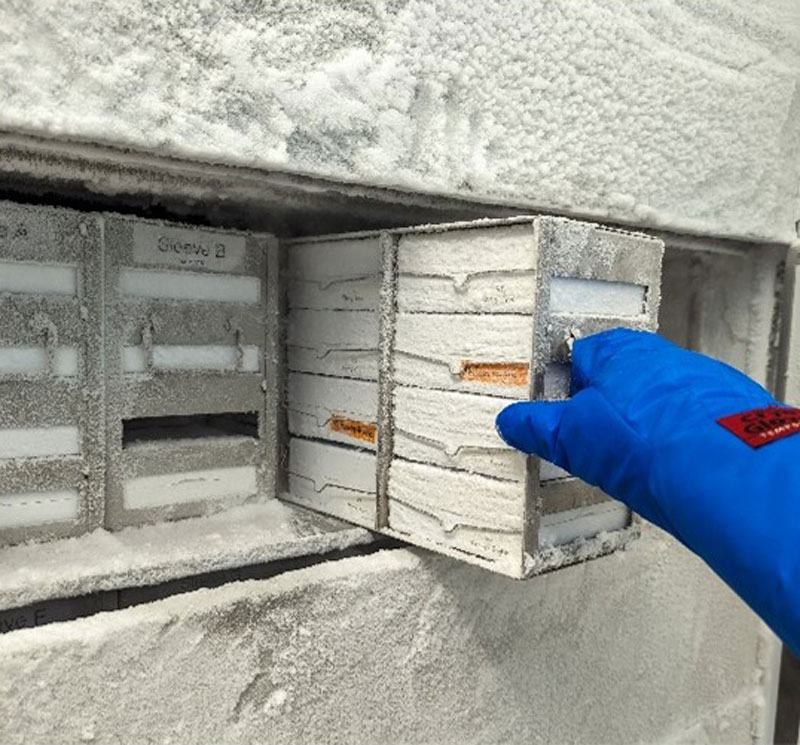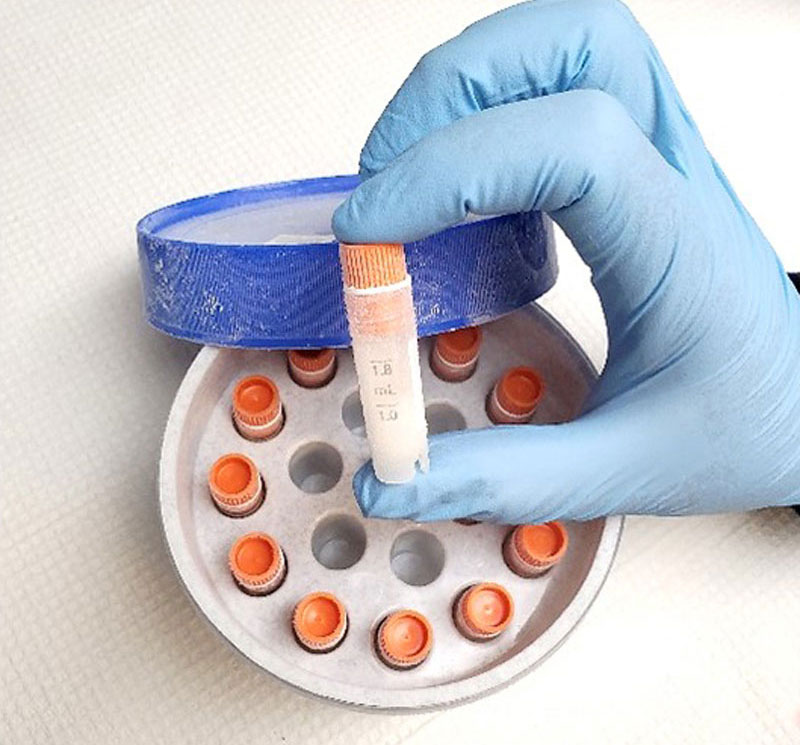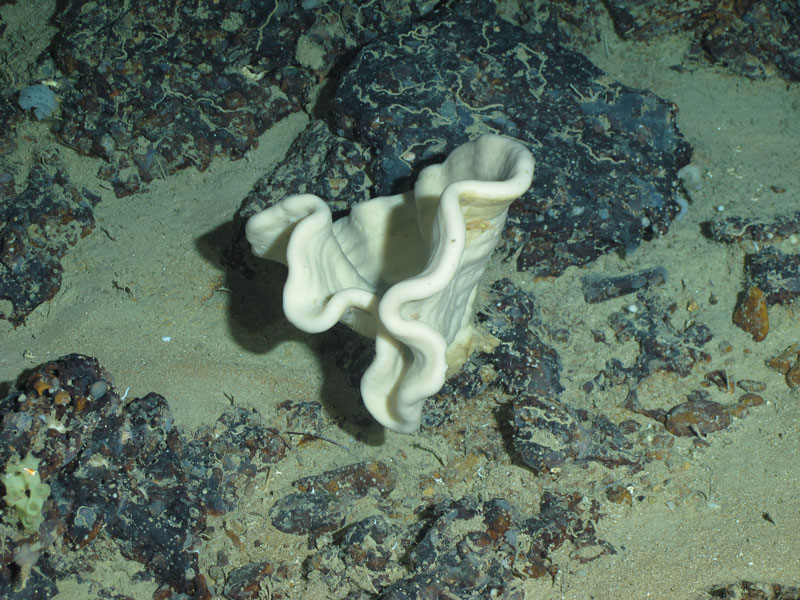Exploration of Deepwater Habitats off Puerto Rico and the U.S. Virgin Islands for Biotechnology Potential
Biological Collections: The HBOI Sponge Biobank
During the Exploration of Deepwater Habitats off Puerto Rico and the U.S. Virgin Islands for Biotechnology Potential expedition, we collected 136 samples. What happens to these samples after an expedition? Some of them are archived in biological collections, like the sponge biobank at Harbor Branch Oceanographic Institute (HBOI).


Biological collections consist of samples of organisms and their associated biological material (e.g., tissue and DNA). There are two types of biological collections: Natural history collections include non-living samples — preserved organisms or remains. Living collections include "living" samples — research and model organisms that are grown and maintained (e.g., cells) in centers and repositories, like biobanks. Biobanks are repositories where living organisms and materials are stored and preserved for research purposes at extremely cold sub-zero temperatures in cryogenic storage facilities.
The HBOI biobank was developed for biomedical, biotechnology, biodiversity, and restoration research purposes. Subsamples of select sponges collected during this expedition were cryopreserved and stored in HBOI’s sponge biobank in cryogenic storage (-80°C/-112°F). As of July 2024, our biobank has approximately 10,000 tubes containing cells, fragments, and buds from more than 500 sponges representing more than 125 different species.


Building and maintaining this collection is essential to expanding our understanding of sponges in the natural world, both now and for future research. By storing and safeguarding this material from a wide range of species, we can study a sponge’s marine natural products, resilience to global changes, relationship to other organisms and the environment, and more.
By Megan Conkling, Harbor Branch Oceanographic Institute, Florida Atlantic University
Published October 1, 2024